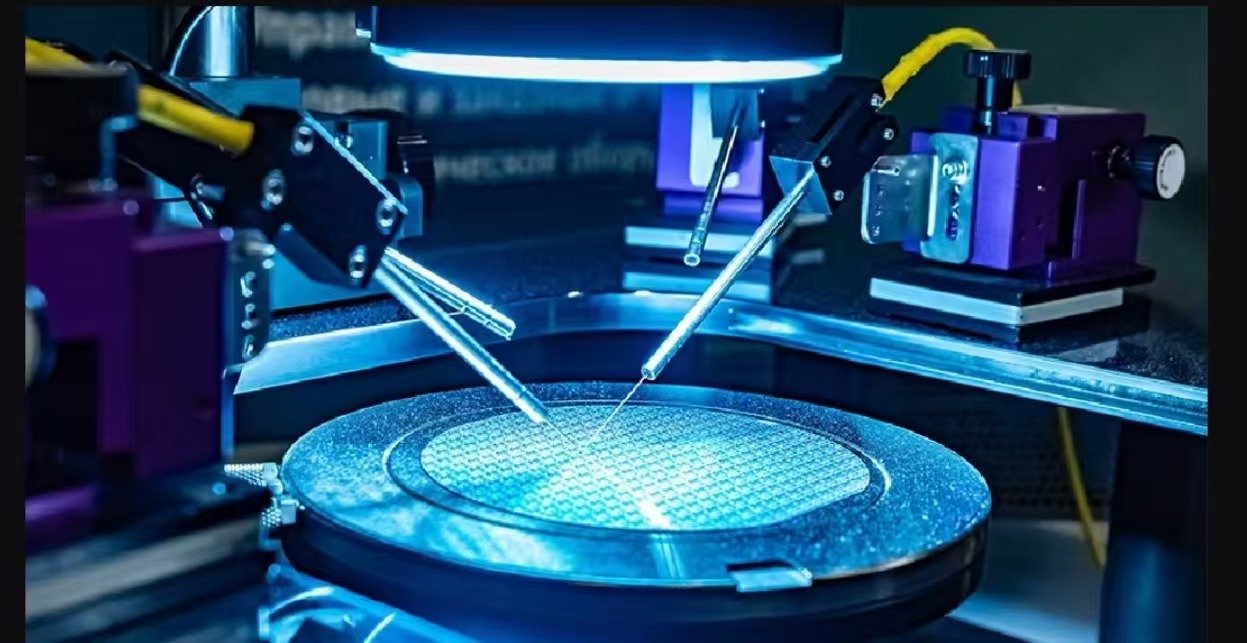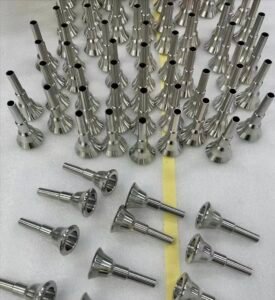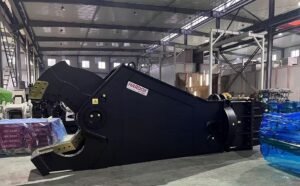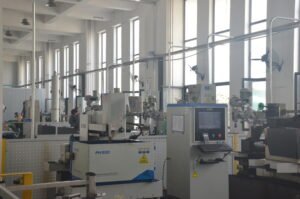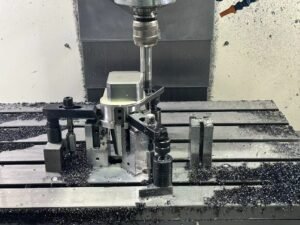In the world of semiconductor manufacturing, precision CNC machining is indispensable for producing high-quality equipment. As semiconductor devices continue to shrink in size and increase in complexity, the demand for ultra-precise, reliable machining processes has never been greater. From basic milling and turning to advanced electrical discharge machining (EDM) and ultra-precision grinding, these technologies play a crucial role in the production of semiconductor devices.
At AnchorCut, we understand that achieving the highest precision while maintaining efficiency in production is essential for semiconductor manufacturers. Our expertise in CNC machining, combined with cutting-edge tools and processes, allows us to deliver the performance necessary to meet the most stringent requirements of the semiconductor industry, particularly for key fabrication steps like PVD (Physical Vapor Deposition), CVD (Chemical Vapor Deposition), ALD (Atomic Layer Deposition), RTP (Rapid Thermal Processing), and EPI (Epitaxy).
Unique Characteristics of Semiconductor Equipment Machining
Machining semiconductor equipment poses several unique challenges that require innovative solutions:
– High Precision Requirements: Components such as vacuum chambers, waveguides, and electrodes demand exceptionally tight tolerances, often down to micron or even nanometer precision.
– Complex Geometries: Many semiconductor components have intricate shapes that require advanced machining techniques to ensure accuracy, particularly for fine feature formation, which is critical in processes like ALD and CVD.
– Multi-Axis Machining Needs: Multi-axis machining, distortion prevention, and handling of thin-walled parts are critical to achieving the desired outcomes in tools used for photolithography, track systems, and etch processes.
Real-World Application: CNC Machining in Semiconductor Manufacturing
Case Study: A leading semiconductor equipment manufacturer needed custom electrodes with complex geometries and extreme precision for use in RTP systems and etching tools. Our five-axis machining capabilities enabled us to produce these components to the client’s exact specifications, delivering a high-quality product within a tight timeframe. The result was improved production efficiency and lower downtime for the client.
The Role of CNC Machining in Semiconductor Fabrication Processes
Precision CNC machining plays a crucial role in supporting various fabrication steps, including:
– Lithography (TRACK): CNC-machined components are essential in track systems used in photolithography, where precision and stability are key.
– Thin Film Deposition (PVD, CVD, ALD): For tools involved in PVD, CVD, and ALD, precision CNC machining ensures the production of high-performance chambers, electrodes, and vacuum systems that maintain uniform deposition layers and optimal surface conditions.
– Etching (Dry and Wet): Both dry (plasma) etch and wet etch tools require precisely machined parts, such as electrodes, nozzles, and chamber components, to achieve consistent and accurate material removal.
Selecting the Right Machining Processes
Different requirements in semiconductor equipment manufacturing call for specific machining processes:
– Rough Machining: Conventional methods like milling and turning efficiently remove most material in the early stages of production.
– Finish Machining: Precision techniques such as grinding, polishing, and EDM ensure high-quality surface finishes and dimensional accuracy during the final stages of production.
– Complex Geometries: Five-axis machining and 3D surface milling are ideal for producing intricate three-dimensional shapes for complex tools used in lithography and deposition processes.
– Micro Features: For extremely fine features, methods like micro-milling, micro-EDM, and laser machining are essential, especially in equipment used for deposition and etching.
– Difficult Materials: Semiconductor manufacturing often involves challenging materials, and advanced techniques such as ultrasonic machining and electrochemical machining are used to handle these.
Tool Optimization for Enhanced Performance
The selection and optimization of cutting tools directly impact the precision and efficiency of CNC machining:
– Material Selection: Superhard tools like cubic boron nitride (CBN) and polycrystalline diamond (PCD) are ideal for machining difficult materials used in semiconductor fabrication tools such as those for CVD and PVD processes.
– Geometric Optimization: Optimizing tool geometry (rake angle, clearance angle, and edge radius) improves chip removal, reduces cutting forces, and minimizes tool wear.
– Control Strategies: High-speed machining, variable-speed cutting, and minimum quantity lubrication (MQL) are optimization strategies that enhance machining quality and extend tool life.
Optimizing Machining Parameters
The key to high precision lies in careful parameter selection:
– Cutting Conditions: Factors like cutting speed, feed rate, and depth of cut must be chosen based on material properties and tool capabilities.
– Material Removal Rate: Finding the right balance between removing material efficiently and avoiding excessive tool wear is crucial, particularly for components used in RTP and EPI systems.
– Path Optimization: Optimizing tool paths reduces idle time and increases overall machining efficiency.
– Innovative Techniques: Vibration cutting and ultrasonic-assisted machining help improve chip evacuation and extend tool life.
Enhancing Machine Performance
For semiconductor equipment machining, high-performance machines are fundamental:
– Rigidity and Stability: Machines must provide high rigidity, thermal stability, and precise positioning for creating chambers and tools used in etching and deposition.
– Closed-Loop Control Systems: Using systems such as linear motor drives, hydraulic balancing, and active vibration control ensures dynamic accuracy and stability.
– Smart Technologies: Incorporating thermal error compensation and other intelligent technologies boosts performance in high-precision environments such as photolithography and ALD chambers.
Real-World Application: Machine Performance Optimization
Example: One of our clients required the production of vacuum chambers with sub-micron tolerances for use in PVD tools. By utilizing closed-loop control systems and real-time thermal error compensation, we were able to produce components that met the client’s high precision needs without compromising efficiency.
Controlling the Machining Environment
A controlled environment is critical for maintaining precision in semiconductor equipment production:
– Temperature Regulation: Machines equipped with precision temperature control systems prevent fluctuations, which can significantly affect accuracy.
– Air Quality Management: Cleanroom facilities with air purification and humidity control help maintain the quality of sensitive semiconductor components.
– Material-Specific Measures: Specialized processes for oxidation and corrosion prevention may be necessary for certain materials used in EPI and etching tools.
Frequently Asked Questions (FAQ)
1. What are the most critical factors in CNC machining for semiconductor equipment?
Precision, tool selection, process optimization, and environmental control are the most critical factors in achieving high-quality results for semiconductor equipment machining.
2. How does CNC machining support PVD, CVD, and ALD processes?
CNC machining ensures the precision manufacturing of chambers, electrodes, and other critical components required for uniform film deposition and equipment reliability in these processes.
3. Can AnchorCut handle large-scale production runs for semiconductor equipment?
Yes, while we specialize in precision machining for small batches, we also have the capacity to handle larger production runs with the same level of precision and quality.
4. How does AnchorCut maintain quality control during production?
We implement rigorous quality control procedures, including in-process and final inspections, to ensure that every part meets client specifications. Our machines are equipped with advanced monitoring and control systems to detect and prevent deviations.
Conclusion
Semiconductor equipment machining is a complex process that requires a deep understanding of materials, tools, machines, and environmental controls. At AnchorCut, we are committed to overcoming these challenges and delivering high-precision, high-efficiency machining solutions. By leveraging the latest technologies and optimization strategies, we help our clients achieve their goals, whether for small custom runs or larger production projects. With experience in CNC machining for processes such as PVD, CVD, ALD, and etching, we are ready to support the most advanced semiconductor manufacturing needs.
Partner with us today for your precision CNC machining needs and let’s drive innovation in semiconductor manufacturing together!
